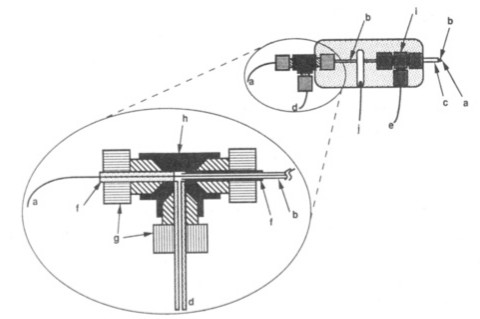Coaxial Sheath Solvent Ion Spray Interface - 2
The Henion group describes an coaxial sheath solvent interface with pneumatically assisted spray formation20,21. Details of the interface were provided in the second paper.

The group investigated some experimental parameters like composition of the BGE, the pressure of the nebulizing gas and the CE-capillary I.D. The sheath solvent used was 5 mM ammonium phosphate in methanol and run at 10 µL/min.
It was noticed that at low nebulizing pressure sensitivity decreased indicating that a pure electrospray was not effective under these conditions. Using a 100 µm i.d. separation capillary gave the best sensitivity but also showed the so-called venturi effect. The high velocity of the nebulizing gas caused suction on the outlet of the CE capillary and therefore an additional hydrodynamic flow on top of the EOF. This phenomenon has been observed by many other groups and has resulted in general advice to use a 50 µm i.d. separation capillary. Also, during the injection of the sample, the nebulizing gas pressure was reduced.
With this approach, the group demonstrated to obtain sensitivity in the low µM range with decent quality MS spectra.
![]()
20J.D. Henion et al., Anal. Chemistry, 66, 2103 (1994)
21J.D. Henion et al., J. Chrom., 697, 205 (1994)
